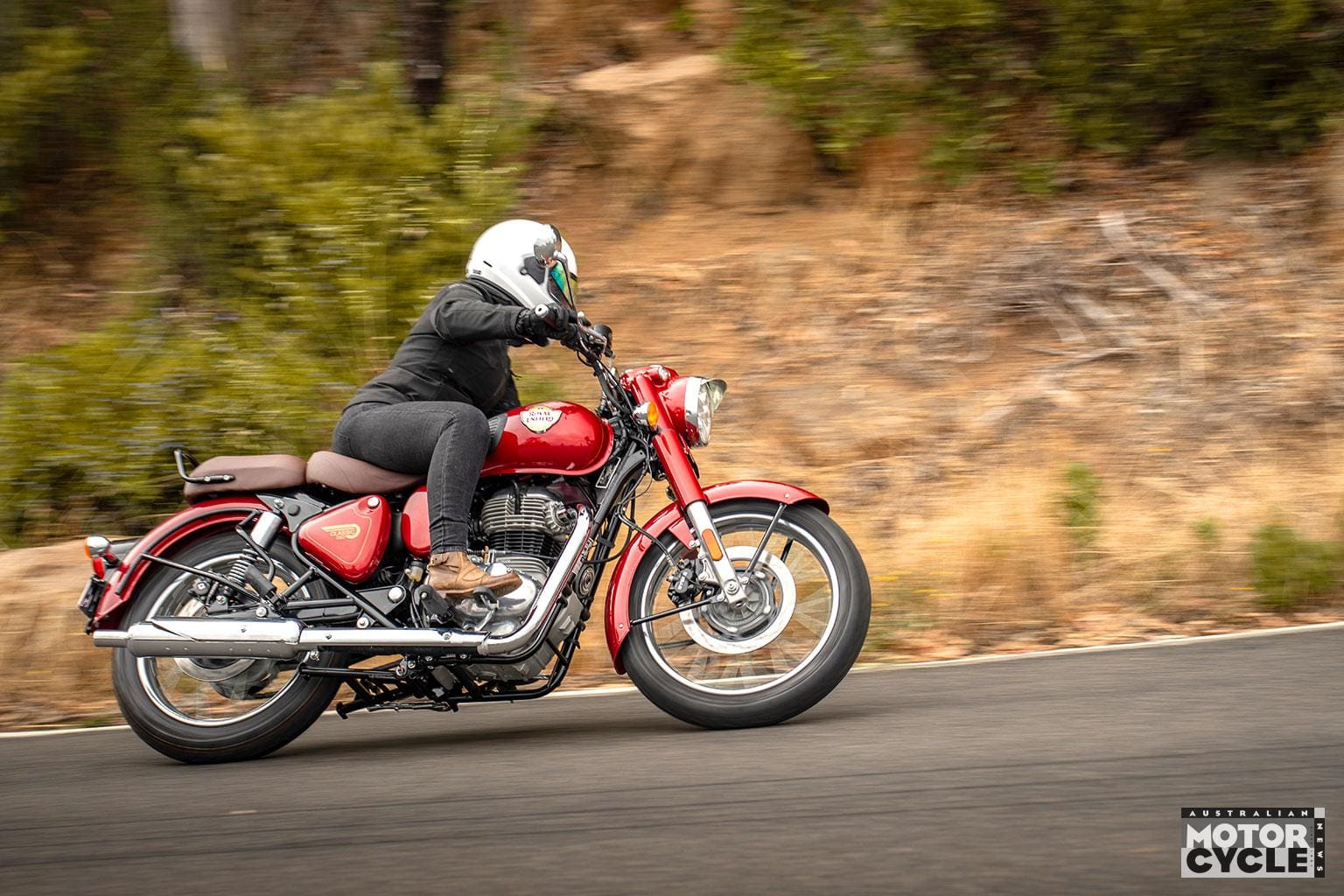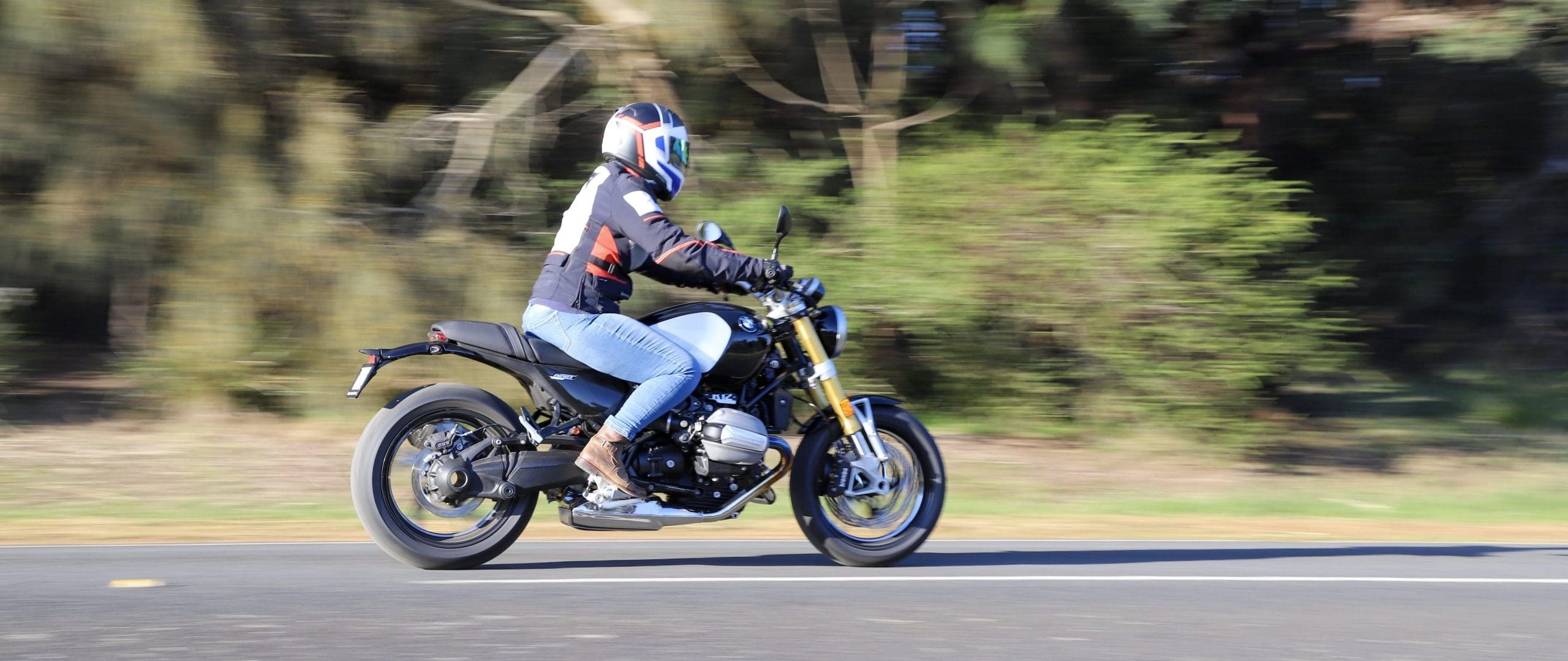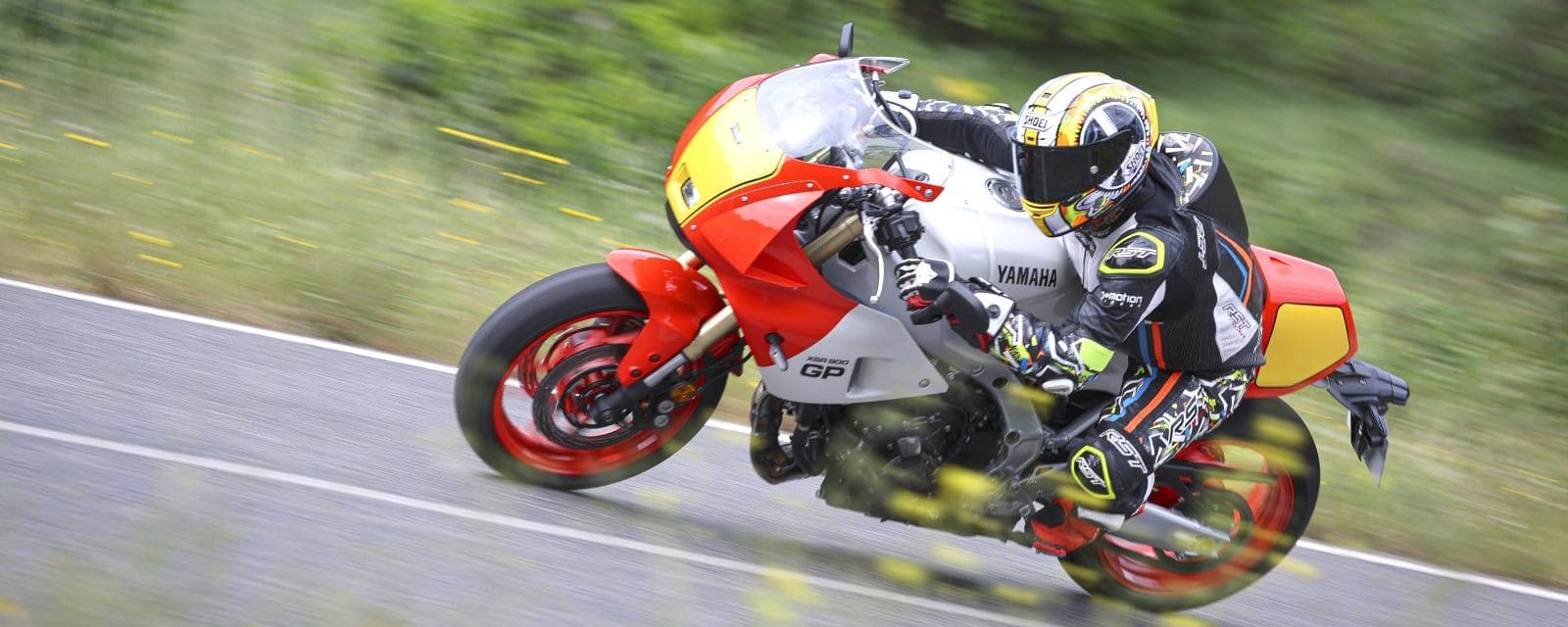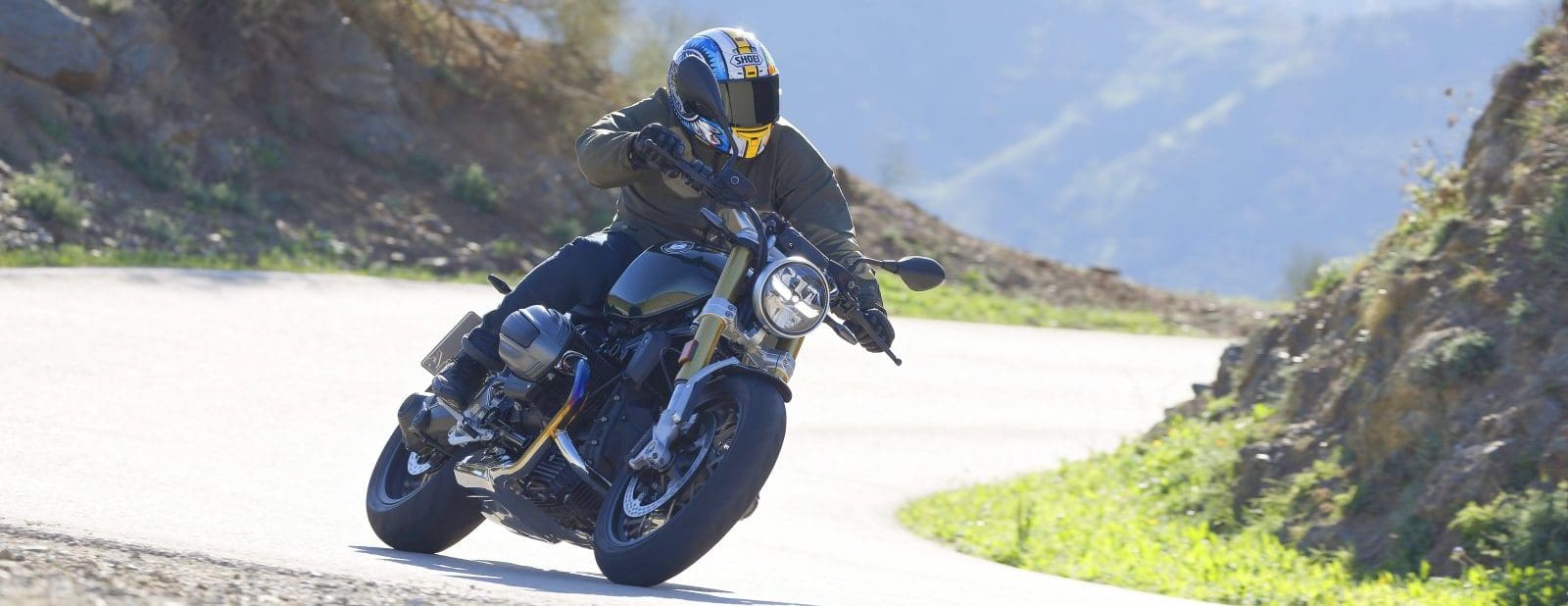If it’s a retro vibe and an air-cooled swagger you want, the latest R 12 nineT might be the last bike you ever buy.
Creating a retro motorcycle is a tricky business. Nostalgia must blend with modernity. The past must be celebrated while designing for the fast-changing needs of today’s markets. And whatever balance of old and new the manufacturer comes up with, for every person who applauds its looks and style, another half dozen will fold their arms and say, no, that’s wrong.
Enter the BMW R 12 nineT. The first serious update of the decade-old R nineT boxer twin, and perhaps the most satisfyingly blended retro yet to come from the German manufacturer. There’s a new, lighter chassis and thoroughly updated electronics, a sleeker look and generous scope for customisation too. The price is $26,495 – a fraction more than the older model’s – although most owners will undoubtedly bloat that figure by adding a few pricey accessories.

Amidst all this change and demand for customisation is the small matter of an 1170cc air-cooled boxer engine which, with BMW celebrating its centenary year, can be traced all the way back to 1923. On start up, there’s still that timelessboxer rocking movement at idle as the venerable shaft-driven twin warms its cooling fins, followed by a trademark bark when the throttle is blipped. It makes you realise how refined and smooth modern, liquid-cooled BMW boxers have become and also appreciate the character and mechanical feel of the older design.
Peak power remains at the R nineT’s 80kW (107hp) but arrives 250rpm earlier, with peak torque now 115Nm at 6500rpm, which is 1Nm less and 500rpm higher in the rev range. Changes to the four-valves-per-cylinder, DOHC engine are minimal, although a new airbox is positioned under the seat to eliminate the air intake duct that ran down the right-hand side of the R nineT’s tank and the exhaust has also been redesigned.

Once on the move, the age and character of the boxer continue to show. There’s a slight pull from the shaft drive under heavy acceleration and, despite having an optional quickshifter fitted for the first time, the gearbox is hardly quick or slick by modern standards. The fueling, however, is perfect – soft and sweetly metered in Road and Rain modes, with Dynamic mode adding urgency to throttle inputs without being overly aggressive – while improvements to low and midrange drive make a noticeable difference to the older bike.
The drive from as low as 2000rpm is now as clean as it is enormously strong. Even short shifting at 4000rpm results in an old-school Bavarian surge that straightens arms in a very special way. Hustling the R 12 nineT through mountain passes was a torque-fuelled joy. I left the new quickshifter alone and ran a couple of gears too high, the rich and all-enveloping torque making life so easy. The R12 likes a few revs, too, and can deliver a decisive turn of speed for a fast overtake. Switch off the traction control (do-able on the move) and it will happily pop the front wheel up with nonchalant ease.
If this all sounds familiar, the same can’t be said of the chassis, which is fully refreshed for 2024. The frame is lighter, although at 220kg wet the R 12 nineT is only 1kg lighter. Wheelbase goes out to 1511mm from 1487mm, and the steering relaxes a little with a new rake angle of 27.7 degrees compared to the R nineT’s 26.8 degrees. The front suspension features a similar but smaller-diameter 45mm upside-down fork while the directly connected rear shock is now mounted at an angle rather than upright.
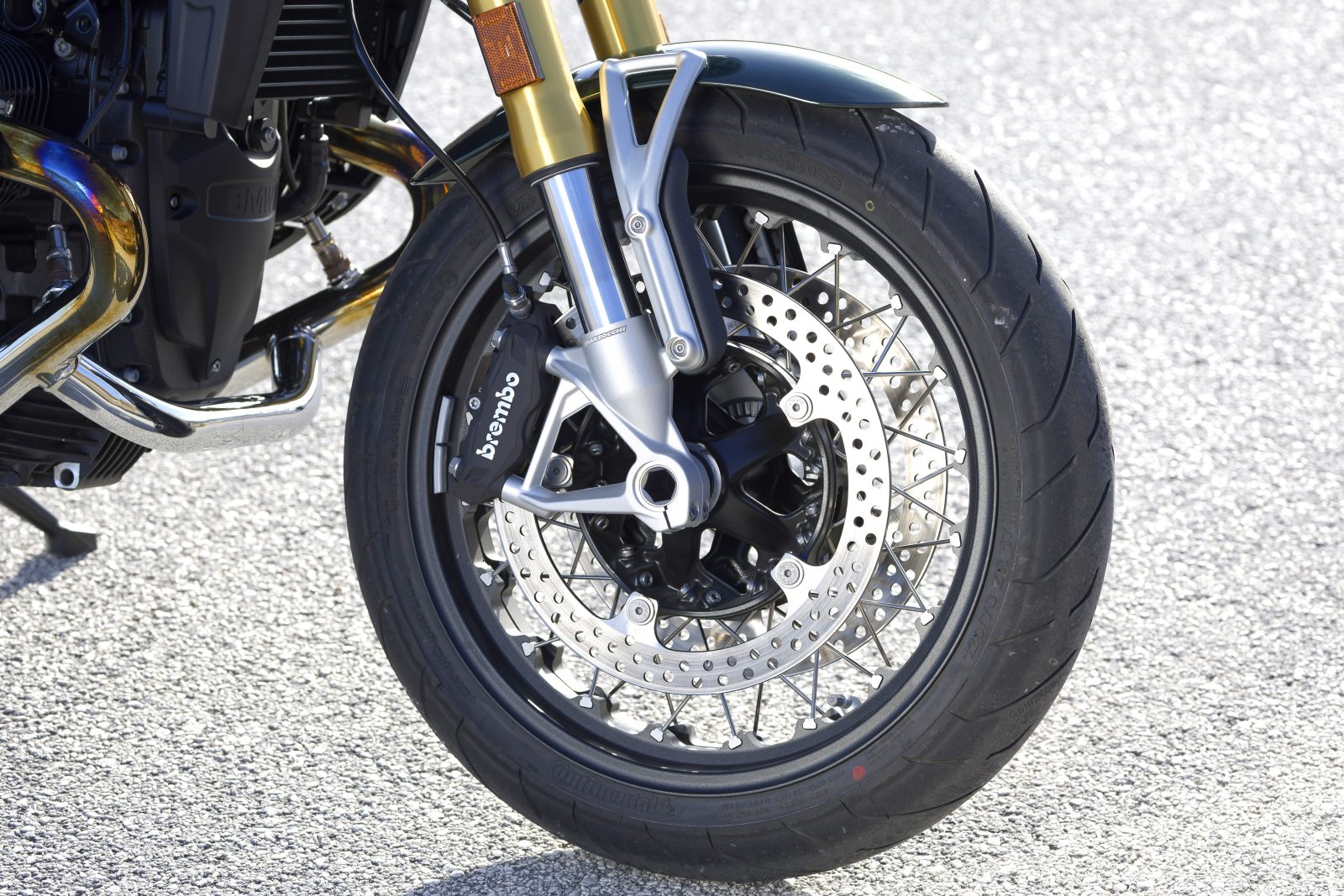
BMW’s cornering ABS Pro is standard while the brakes themselves are four-piston radial monobloc calipers and twin 310mm discs at the front, with a two-piston caliper and 265mm disc
at the rear.
On the road, the chassis mirrors the languid feeling of the engine. It’s not pin-sharp or fast steering, instead it rolls into corners and finds a natural flow. Stability is as absolute as you’d expect from a long-wheelbase machine with relaxed steering geometry, while the weight distribution and balance feel spot-on for a spirited but controlled ride.
Don’t be fooled into thinking this heritage Beemer is exclusively for sensible folk though because, like its engine, the chassis is capable of delivering a surprisingly sporty ride. Unlike some other bikes in this class, ground clearance is good and while the suspension is set for a comfortable ride, it is certainly not too soft or lacking control. At 220kg (wet) there is a fair amount of weight for the brakes to manage but they have loads of feel and stopping power, while intervention from the cornering ABS is minimal, no matter which of the two dry-weather riding modes is selected.

Talking of weight, 220kg might sound a little intimidating to smaller riders but the R 12 nineT’s mass is carried typically low in the chassis, giving a lovely low-speed feeling and balance. At 795mm the seat is lower than the old model’s 805mm, while the reshaped tank is also 30mm shorter and places the rider closer to the 870mm-wide handlebar, enhancing the rider’s connection with the front tyre. I felt instantly at home and was comfortable for several hours in the saddle. Tick the optional comfort extras on the configurator and, with cruise control especially, there’s no reason why you couldn’t take on 500 kays in a day or more.
On test, our bike returned 4.7L/100km meaning it should get more than 300km between fuel stops if speeds are kept legal-ish.
As mentioned, the factory options are seemingly limitless. Our testbike came with the optional 3.5-inch TFT dash ($185), but I’d prefer the standard analogue clocks for a retro machine of this type. While the R12’s keyless ignition is useful you still need to use a key for the fuel cap.]

Overall the standard of equipment is very high, the level of finish is superb and, of course, while other manufacturers in this class work hard to try to disguise their bikes’ radiators, BMW does not. The look is clean.
Admittedly, some potential customers are not going to enjoy the R 12 nineT. The rocking movement of the engine, the pull of the shaft drive and a gearbox that isn’t the quickest won’t impress everyone. But, for many, a little personality, just like we had in the old days, will only be a good thing.
Furthermore, once you adapt to its quirks, it’s an easy bike to ride. Superbly fueled, it’s enriched with torque from the very bottom of the rev range and can give much ‘faster’ bikes a scare when let off its ultra-cool retro leash. Meanwhile, the revised chassis makes shorter riders welcome, ensures it hustles like all the best boxers, and does so without dragging its ’pegs or pipe on the road.
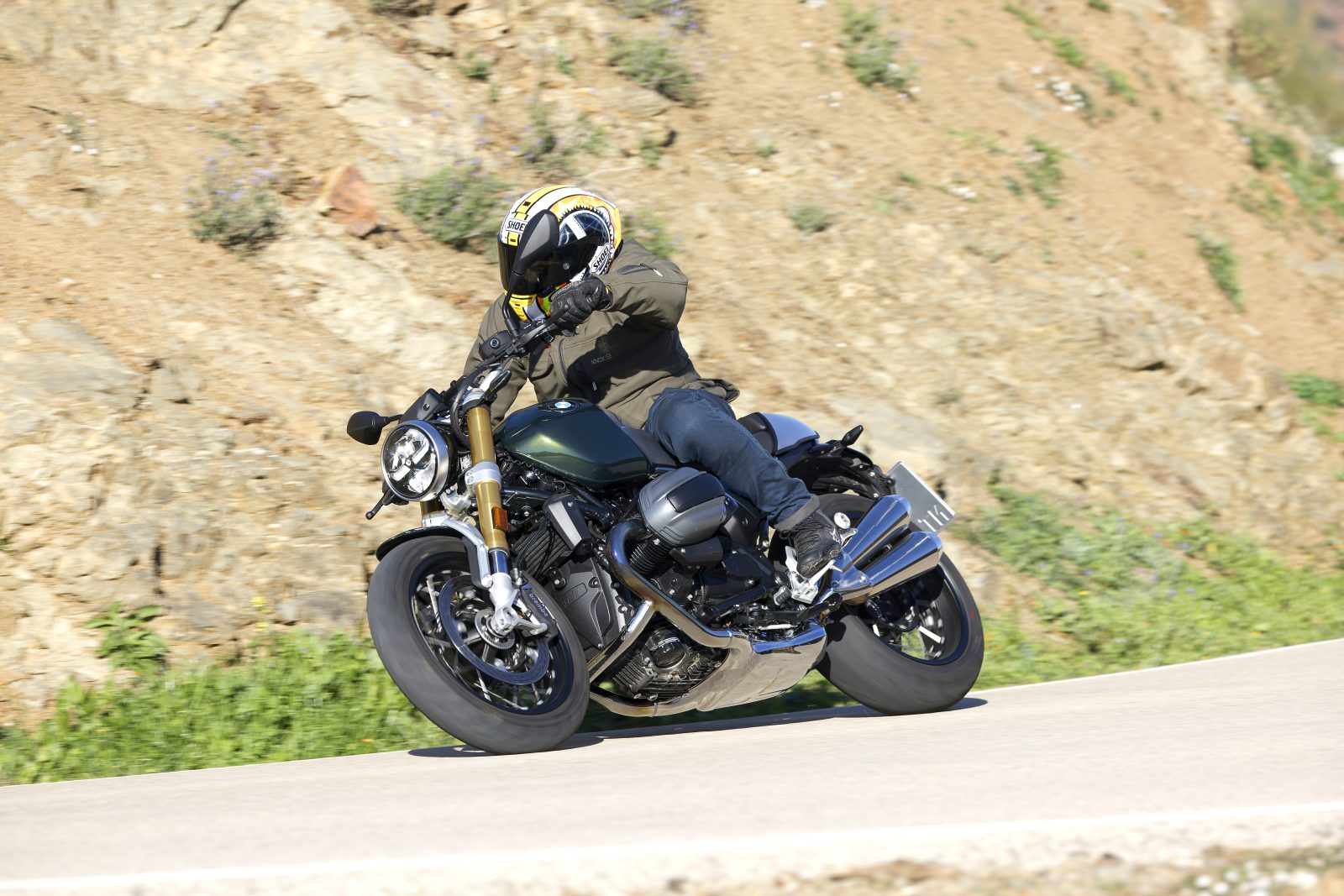
Yes, the R 12 nineT is an expensive motorcycle. Personalise it with a few options – and let’s face it, who wouldn’t want to? – and you are into serious money. But at least you can see where the money has been spent. Some won’t get it – that’s the nature of the retro beast – but in a class where authenticity is the most valuable commodity of all, the quality, character and mechanical intimacy of this air-cooled boxer will be exactly what many want from a retro.
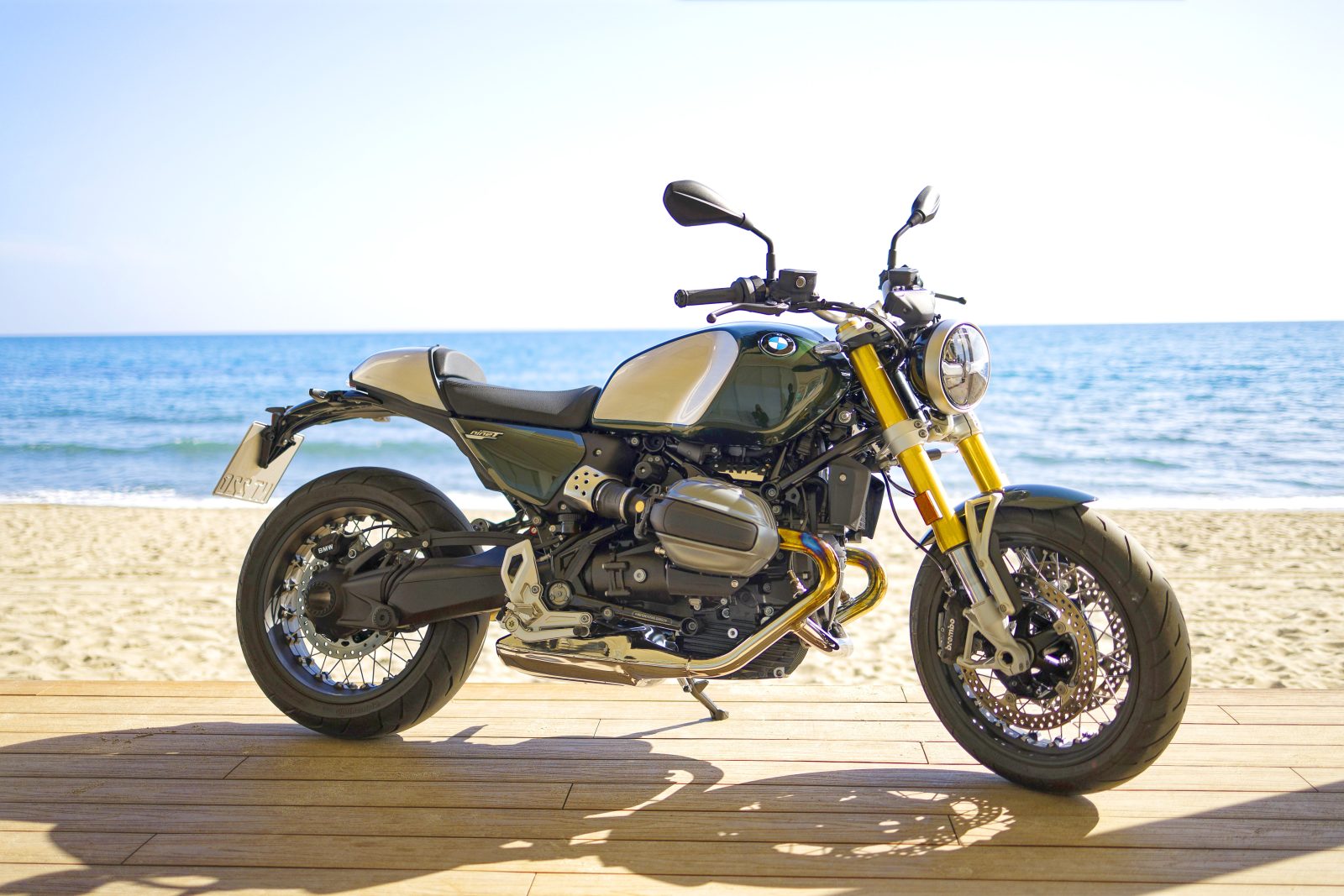
Down and out
The 2024 bike’s wheelbase is up from 1487mm to 1511mm and the overall length is up from 2105mm to 2130mm. Longer and lower, the seat height has dropped 10mm to 795mm.
Breathe deeper
The airbox has moved under the now-lower seat, which removes the side air duct that ran down the right-hand side of the old bike. The cleaner design shows the air-cooled boxer.
Finned twin
The air-cooled boxer twin remains from the previous model, with 80kW arriving at 7000rpm. Peak torque is a fraction down by 1Nm, but still an impressive 115Nm at 6500rpm.
Switch hitter
Three riding modes, Road, Rain and Dynamic, which deliver different throttle maps and are connected to the lean-sensitive traction control. TC can be switched on and off on the move.
Needles and pins
Standard clocks are traditional analog items, speedo, and rev counter, with a small digital display to select menus and give a gear position. There’s an optional smaller TFT item.
PROS: Authentic, beautifully finished retrobike with big-bike performance.
CONS: It’s pretty expensive given the lack of engine development.
TEST: ADAM CHILD PHOTOGRAPHY: SUPPLIED
SPECS

ENGINE
Capacity 1170cc
Type Horizontally opposed twin, four valves per cylinder
Bore & stroke 107mm x 73mm
Compression ratio 12.0:1
Cooling Air
Fueling EFI
Transmission Six-speed
Clutch Dry, single-disc
Final drive Shaft
PERFORMANCE
Power 80kW (107hp) @ 7000rpm (claimed)
Torque 115Nm @ 6500rpm (claimed)
Top speed 225km/h (est)
Fuel consumption 4.7L/100km (measured)
ELECTRONICS
Type Not given
Rider aids Traction control and Cornering ABS
Rider modes Rain, Road and Dynamic
CHASSIS
Frame material Tubular steel
Frame type Trellis
Rake 27.7°
Trail 110.7mm
Wheelbase 1511mm
suspension
Type BMW
Front: 45mm USD fork, fully adjustable, 120mm travel
Rear: Monoshock, fully adjustable, 120mm travel
WHEELS & BRAKES
Wheels Cast aluminium
Front: 17 x 3.5 Rear: 17 x 5.5
Tyres Continental ContiRoad
Front: 120/70ZR17
Rear: 180/55ZR17
Brakes BMW
Front: Twin 310mm discs, four-piston caliper
Rear: Single 265mm disc, twin-piston caliper
DIMENSIONS
Weight 220kg (wet, claimed)
Seat height 795mm
Width 870mm
Height 1070mm
Length 2130mm
Ground clearance Not given
Fuel capacity 16L
SERVICING & WARRANTY
Servicing First: 1000km
Minor: 15,000km
Major: 30,000km
Warranty Three years, unlimited kilometres
BUSINESS END
Price From $26,495 (ride away)
Colour options Blackstorm Metallic, San Remo Green or Opt 719
Contact www.bmw-motorrad.com.au



